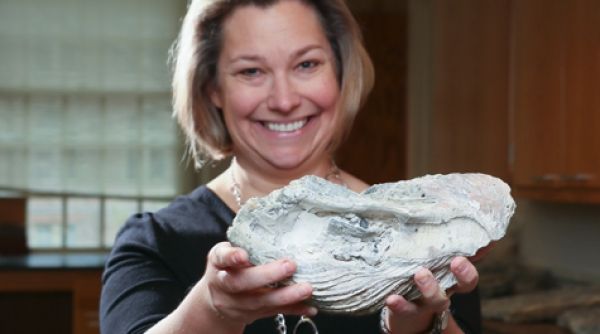Oysters once dominated the Chesapeake Bay ecosystem, and it would be difficult if not impossible for the Bay to return to full ecological health without restoring Crassostrea virginica to its glory days as the Chesapeake’s apex filterer.
Rowan Lockwood and Roger Mann believe that you have to go back to the fossil record to get your head around the idea of a fully oystered Chesapeake. Their paper, “A conservation palaeobiological perspective on Chesapeake Bay oysters,” appears in a special issue of Philosophical Transactions B, titled "The past is a foreign country: how much can the fossil record actually inform conservation?"
Lockwood is a professor in William & Mary’s Department of Geology, which she chairs. Mann is a professor in the Department of Fisheries Science at the Virginia Institute of Marine Science. Their collaboration melds Lockwood’s examination of long-dead Chesapeake oysters with Mann’s expertise in the state of oysters today.
Their paper looks at 900 fossil oysters from three Pleistocene reefs and compares them to oysters today. Lockwood and Mann employ conservation-paleontology methods to create a model of how the Chesapeake Bay looked and functioned long before humans.
Read more at Virginia Institute of Marine Science
Image: Rowan Lockwood displays one of the 900 oyster fossils studied in a palaeobiological analysis of Chesapeake Bay oysters. Photo by Stephen Salpukas. CREDIT: Virginia Institute of Marine Science


